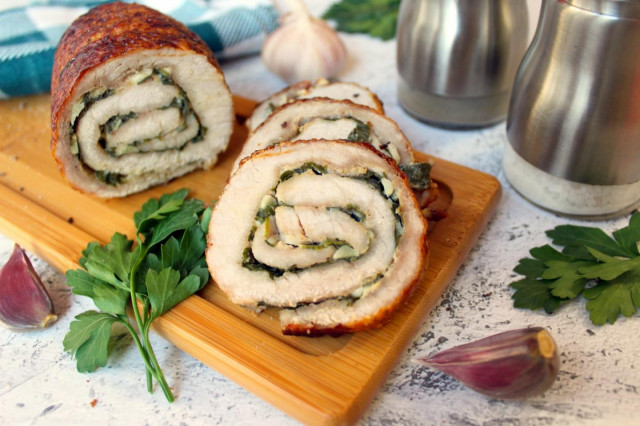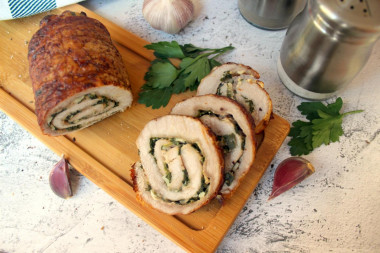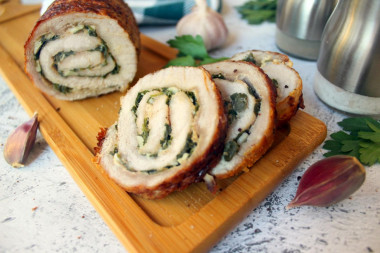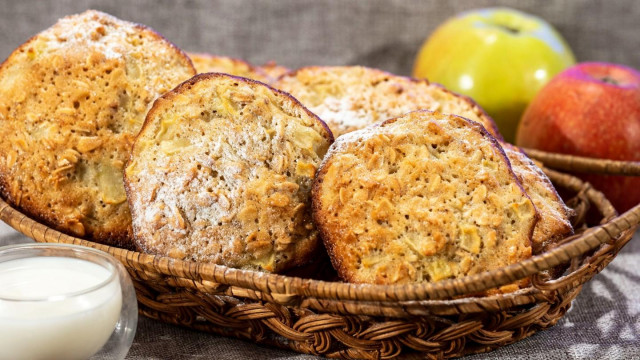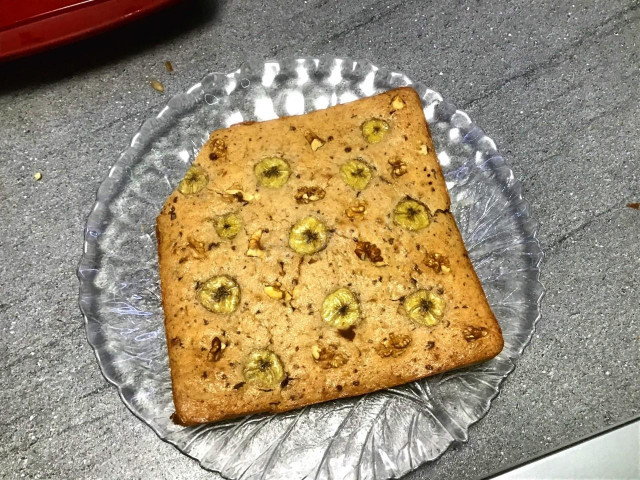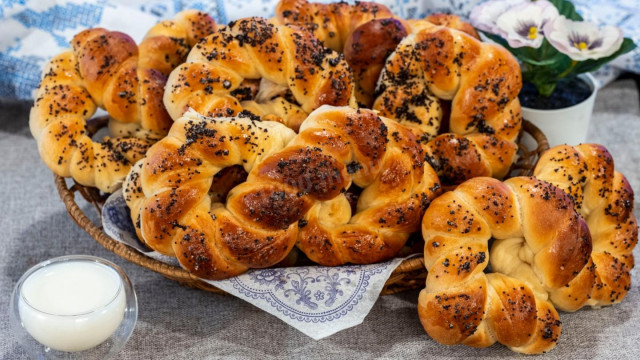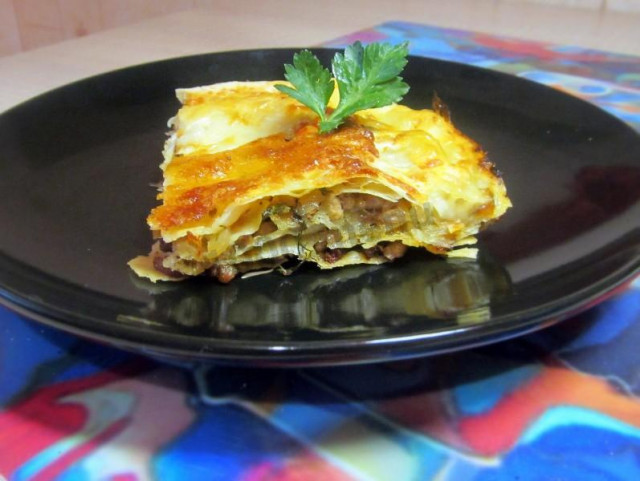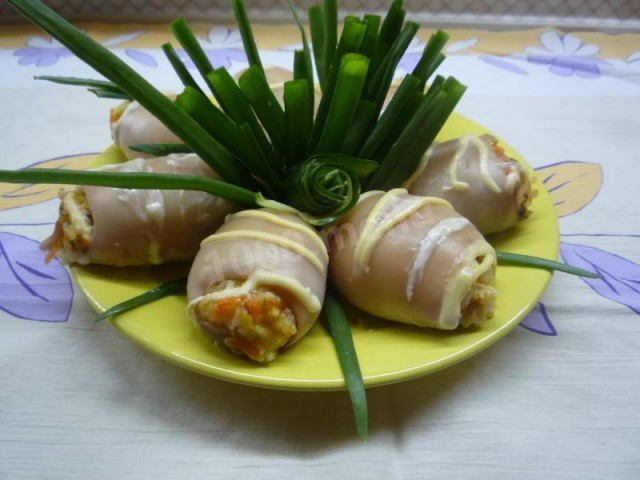Composition / ingredients
Step-by-step cooking
Step 1:
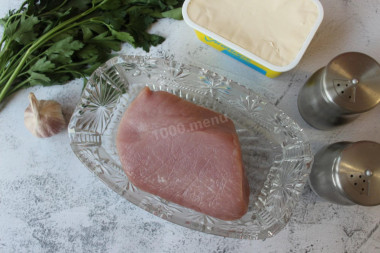
Prepare all the ingredients. Choose lean pork, preferably carbonade. It is better to take the processed cheese in a bath, not in a briquette, and it is also better that it be classic without flavoring additives. In the bath, the cheese is more delicate in taste and soft in texture than in briquettes, and it is easier to work with it. As greens, it is preferable to choose parsley or dill, you can combine it.
Step 2:
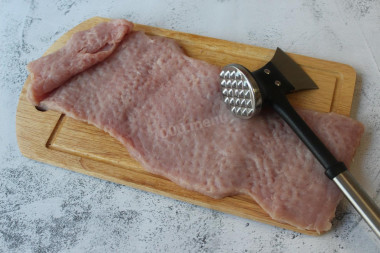
Rinse pork thoroughly under water, blot with paper towels to remove excess moisture, and use a sharp knife to cut into a large layer. Put the meat on a board, cover with plastic wrap or plastic bag and beat the meat with a hammer.
Step 3:
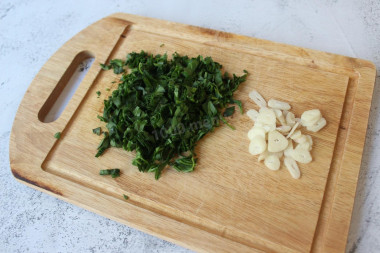
Rinse fresh greens under water, then shake off the water, dry the greens a little and chop it. Peel the garlic cloves from the husk and use a knife to cut into plates.
Step 4:
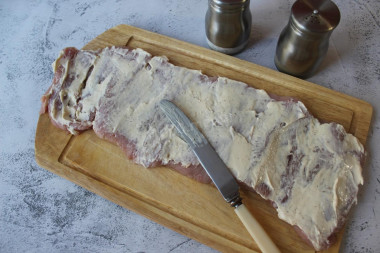
Rub the beaten pork layer on both sides with salt and freshly ground black pepper. Brush the top of the pork with melted cream cheese.
Step 5:
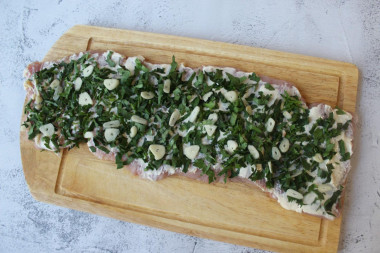
Spread the chopped greens and sliced garlic evenly on top.
Step 6:
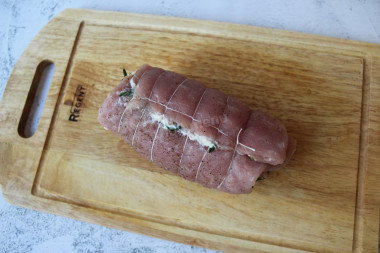
Carefully roll the pork into a tight roll and tie it with a thick, strong thread. If there is no such thread, then you can use ordinary threads in four layers. Under the recipe there is a more detailed instruction on how to bind the meat.
Step 7:
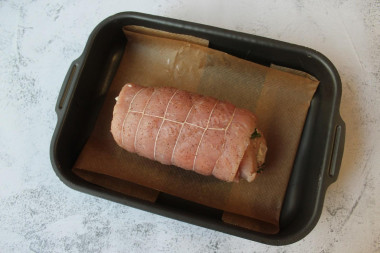
Cover the baking sheet with parchment paper, lay the resulting pork roll seam down on top. Place the baking sheet with the roll in the oven preheated to 180oC for about 1 hour. Determine the exact time and temperature of baking according to your oven.
Step 8:
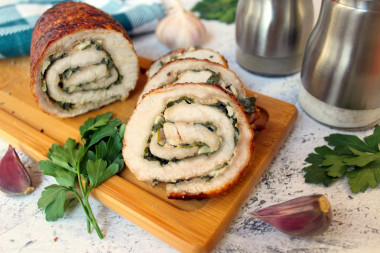
Remove the baking sheet from the oven, transfer the finished roll to the board. Free the roll from the thread, just be careful, as you can burn your hands. Cut the pork roll into portions and serve immediately while it is still hot.
In order to bind the meat, put it seam up. Tie the meat with a double knot from the edge, leaving a thread tail 10-15 cm long. Do not cut the second thread from the coil, make a loop out of it from above, and then pass the thread with the coil under the meat and thread it through the loop. Tighten tightly. Make such loops with threading until the end of the roll. The seam should pass from the top in the middle of the roll.
Turn the meat to the other side, measure the thread by 20-25 cm. more than the roll itself and cut it off. Now we thread a long thread between the formed loops, tightening it tightly on each loop. When you reach the end, you will meet the short end of the thread left at the beginning of the work, and the second end. Tie them tightly with a double knot, cut the ends of the threads.
In addition to pork, any other meat can be used in this dish. Keep in mind that the cooking time, as well as the taste and calorie content of the dish will change. For example, beef is cooked longer than pork, and chicken fillet or turkey is less.
Keep in mind that everyone's ovens are different. The temperature and cooking time may differ from those specified in the recipe. To make any baked dish successful, use useful information about the features of ovens !
So that the oven has time to heat up to the desired temperature, turn it on in advance (10-20 minutes before the start of cooking).
Calorie content of the products possible in the dish
- Pork fat - 333 kcal/100g
- Pork meat - 357 kcal/100g
- Pork - low-fat roast - 184 kcal/100g
- Pork chop on a bone - 537 kcal/100g
- Pork - schnitzel - 352 kcal/100g
- Pork Shoulder - 593 kcal/100g
- Boar's leg - 113 kcal/100g
- Pork - 259 kcal/100g
- Garlic - 143 kcal/100g
- Processed cheese with 60% fat content - 354 kcal/100g
- Processed cheese with 45% fat content - 294 kcal/100g
- Cheese "megle" - 590 kcal/100g
- Tartar cheese - 348 kcal/100g
- Cheese "cheese "shavru" (goat) - 173 kcal/100g
- Viola cheese - 307 kcal/100g
- Ground black pepper - 255 kcal/100g
- Parsley greens - 45 kcal/100g
- Salt - 0 kcal/100g

